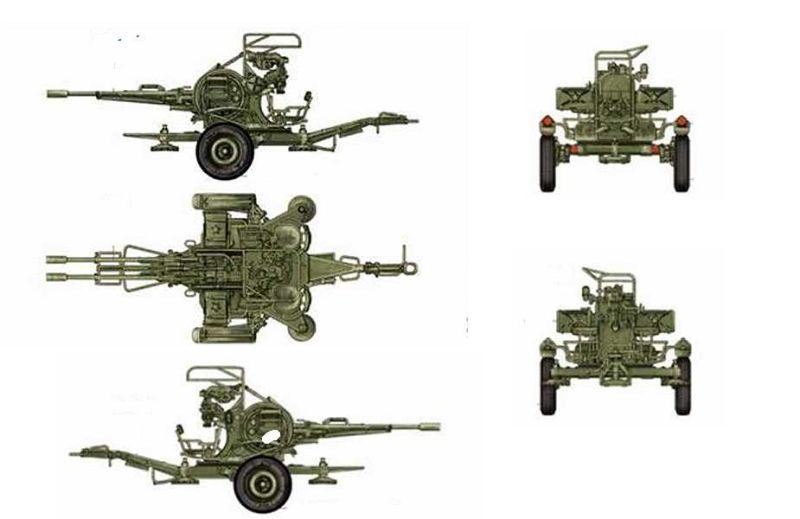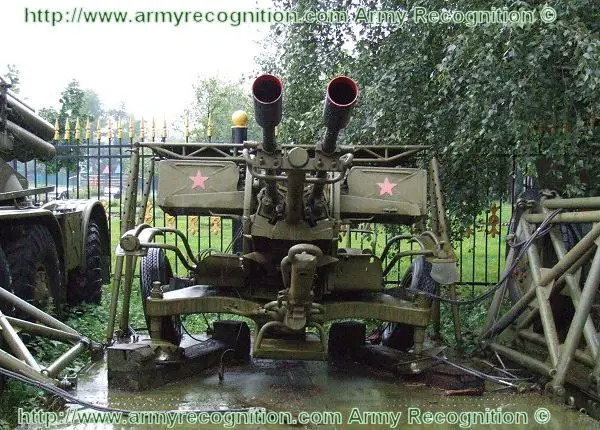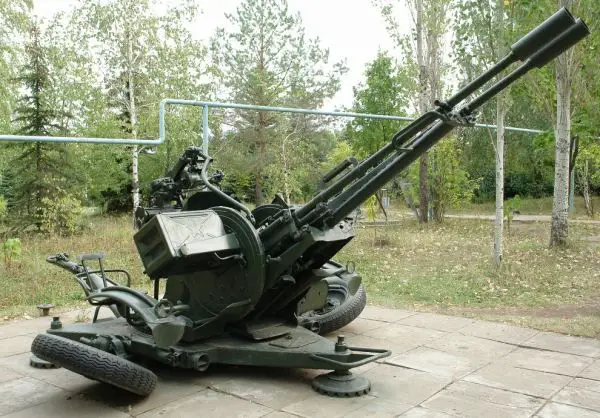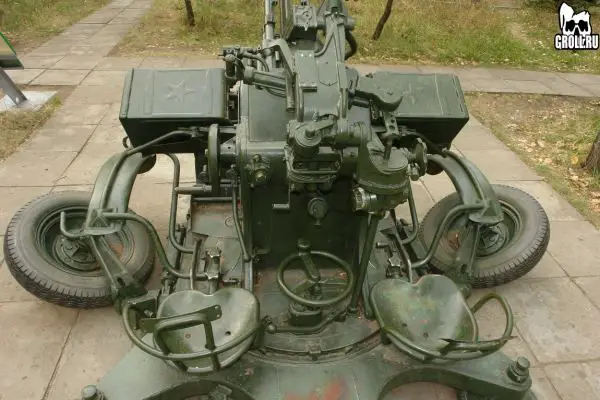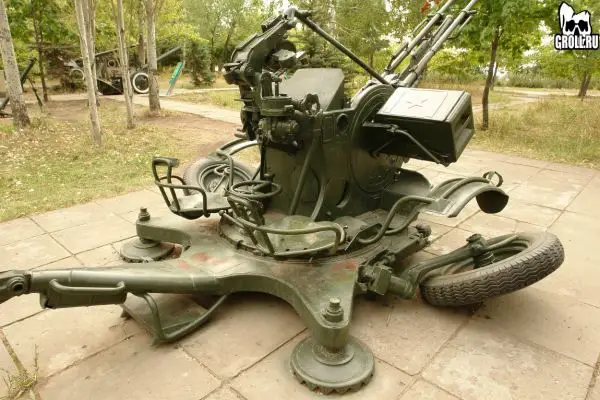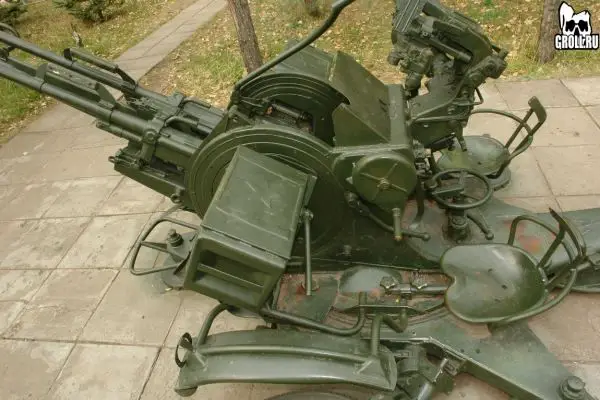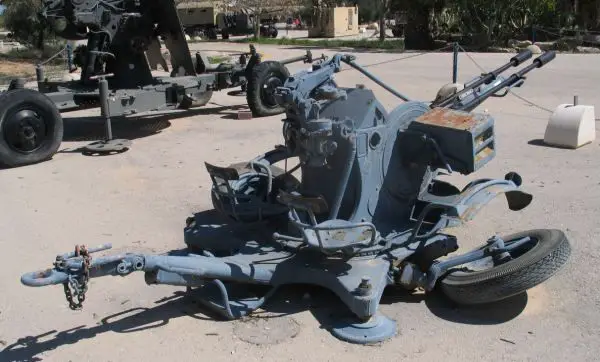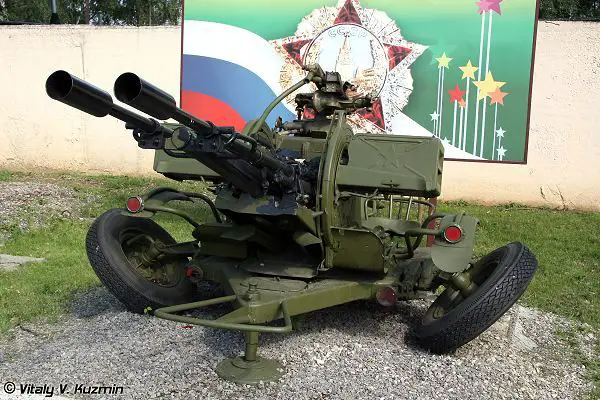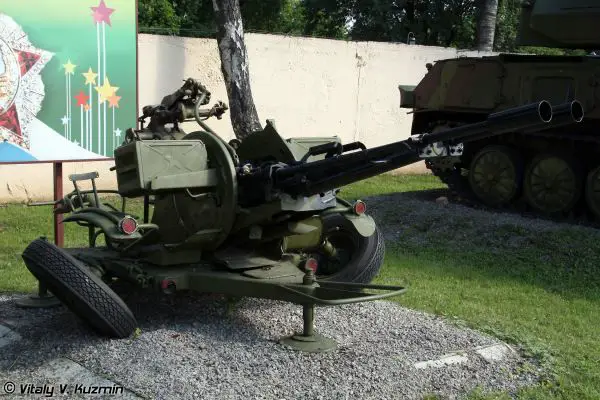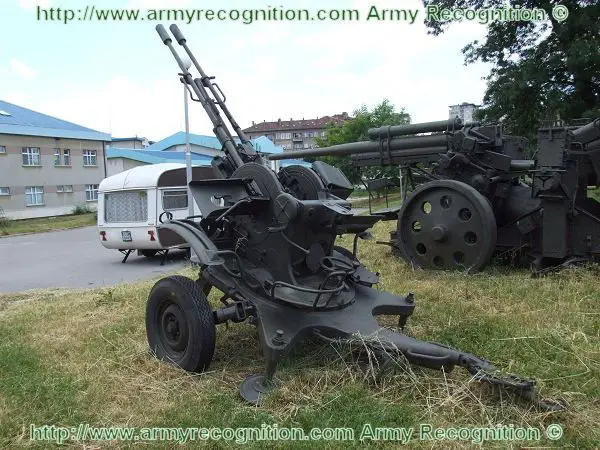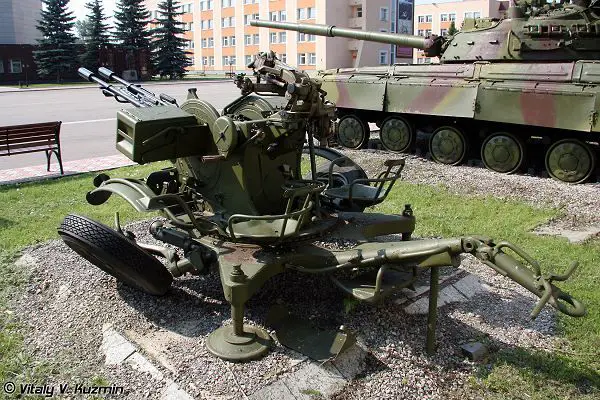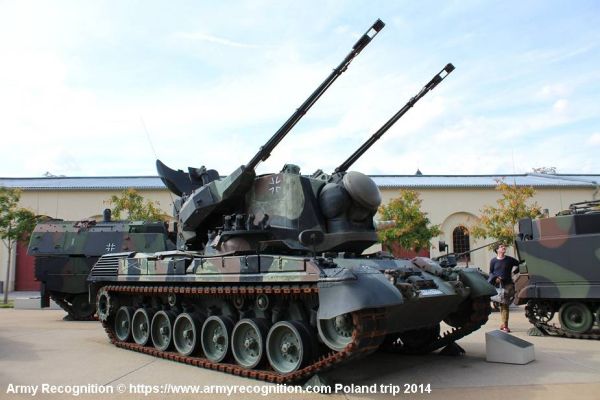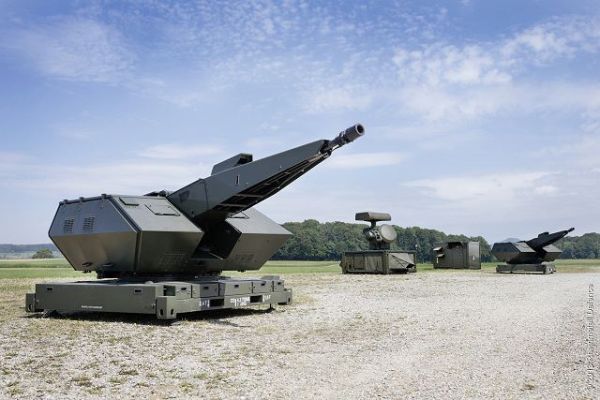Self-propelled anti-aircraft guns.
ZU-23-2.

The ZU-23-2 is a highly versatile, twin-barreled, towed anti-aircraft gun developed by the Soviet Union in the late 1950s. Designed primarily to provide low-altitude air defense, the system is helpful against lightly armored ground targets and infantry. Its simplicity, reliability, and cost-effectiveness have made it one of the world's most widely used air defense systems.
Country users: Afghanistan, Algeria, Angola, Armenia, Azerbaijan, Belarus, Bulgaria, Cambodia, China, Cuba, the Democratic Republic of the Congo, Egypt, Equatorial Guinea, Eritrea, Ethiopia, Finland, Georgia, Greece, India, Iran, Iraq, Kazakhstan, Kyrgyzstan, Libya, Mongolia, Morocco, Mozambique, Myanmar, North Korea, Poland, Syria, Ukraine, Vietnam, and Yemen.
Description
The ZU-23-2 is a twin-barreled, towed anti-aircraft autocannon developed by the Soviet Union to provide short-range air defense and support against low-flying aircraft, helicopters, and lightly armored ground targets. Officially designated "Zenitnaya Ustanovka 23-2," meaning "23 mm anti-aircraft mount, two-barrel," it became one of the most widely used air defense systems globally due to its reliability, versatility, and cost-effectiveness.
The ZU-23-2 was developed in the late 1950s to address the Soviet military’s need for a mobile, lightweight air defense weapon capable of countering low-altitude threats. It entered service in 1960, becoming a standard weapon for Soviet and Warsaw Pact forces. Over time, the system proved its adaptability and was widely exported, eventually seeing service in over 50 countries.
The weapon is mounted on a two-wheeled carriage that can be towed by vehicles such as the 4x4 GAZ-69, allowing for rapid transport and deployment. Once in position, the wheels are raised, and the system is stabilized using three screw-type leveling jacks, enabling it to fire from a stationary platform. Its compact design and ease of operation allow it to be deployed quickly, transitioning from a traveling configuration to combat readiness in under 30 seconds.
Initially developed as a stationary or towed platform, the ZU-23-2’s design has proven highly adaptable. Many operators have mounted the weapon on trucks and other vehicles, creating improvised mobile platforms that can quickly reposition in response to changing battlefield conditions. Some modernized variants of the ZU-23-2, such as the ZU-23-2M, feature advanced fire control systems, radar guidance, and integrated surface-to-air missile launchers (e.g., Igla or Strela), significantly enhancing its combat effectiveness.
The ZU-23-2 has been used extensively in conflicts worldwide, including the Vietnam War, the Afghan-Soviet War, and more recent engagements like the Syrian Civil War. Its rugged construction and reliability have made it popular among regular military forces and non-state actors alike, particularly in asymmetrical warfare scenarios.
Over six decades after its introduction, the ZU-23-2 remains in service due to its affordability, durability, and versatility. As a multi-role weapon system capable of countering aerial threats and providing ground support, it continues to play a critical role in the arsenals of numerous countries. Its evolution and modernization ensure that it remains relevant in modern combat environments, reflecting the enduring value of its design.
ZU-23-2 variants:
- ZU-23M: a modernized version
- ZUR-23-2S "Jod": Polish variant with electro-optical sight and two missile launcher Strela-2M
- ZUR-23-2KG "Jodek-G": Polish version with CKE-2 night/day sight with laser rangefinder and two missile launcher
- ZU-23-2M "Wrobel": Polish naval variant
- ZU-23-2MR "Wrobel-II": Polish naval variant with Strela-2M capability
- Hibneryt: Polish variant, ZU-23-2 system mounted on the rear of Star 266 truck
- ZU-23-2M2 "Vlara": Czech modernized variant
- 23 ltk 95: Finnish upgraded variant
- SAKO 23mm M87/M74/M77/M80/M85:Finnish naval version
- Type 85: Local Chinese production of ZU-23-2
Technical Data
-
Armament and Sight System
The ZU-23-2 is armed with two 2A14 23 mm automatic cannons mounted on a lightweight trailer that can be quickly converted into a stationary firing platform. In the firing position, the wheels are moved aside to ensure stability. The system can transition from a traveling configuration to combat readiness in just 30 seconds, and in emergency scenarios, it can be fired directly from the traveling position. Each automatic cannon is fitted with a flash suppressor and a top-mounted handle to facilitate rapid barrel replacement.
The ZU-23-2 is effective against various targets. It can engage low-flying aircraft and helicopters at a range of 2.5 km and is also capable of targeting lightly armored ground vehicles at a range of 2 km, making it ideal for both direct troop support and the defense of strategic locations.
For aiming, the system uses the ZAP-23 optical-mechanical sight, which processes manually entered target data to provide limited automatic aiming. Additionally, it is equipped with a straight-tube telescope for engaging ground targets such as infantry and lightly armored vehicles.
-
Ammunition
The ZU-23-2 uses two main types of fixed ammunition to address its versatile combat roles: Armor-Piercing Incendiary-Tracer (API-T) and High-Explosive Incendiary-Tracer (HEI-T). The API-T rounds are specifically designed for engaging armored targets and low-flying aircraft, while the HEI-T rounds are effective against lightly armored vehicles and soft targets. Ammunition is fed into the system using conveyor belts connected to two side-mounted ammunition boxes, each with a capacity of 50 rounds. This configuration ensures a steady supply of ammunition during sustained engagements. Fumes produced during firing are vented through side openings in the barrels to improve safety and performance, reducing barrel wear and maintaining operational reliability.
-
Mobility
The ZU-23-2 is highly mobile and can be towed by various light vehicles, most commonly the 4x4 GAZ-69. The system is mounted on a two-wheeled carriage with rubber tires for road transport. When deployed for combat, the wheels are raised, and the system is stabilized using three screw-type leveling jacks. This configuration ensures stable and accurate firing, even on uneven terrain, while allowing for rapid redeployment to meet changing battlefield needs.
-
Combat Use
The ZU-23-2 is a versatile and effective weapon system with multiple combat applications. It is primarily designed for air defense, engaging low-flying aircraft and helicopters in close-range combat. Additionally, it serves as a capable ground support weapon, targeting lightly armored vehicles, infantry, and unarmored threats. Its compact design and rapid deployment capabilities make it ideal for protecting critical infrastructure and troop positions from a variety of air and ground threats. These attributes have cemented the ZU-23-2’s reputation as a reliable and adaptable weapon system in armed forces worldwide.
Specifications
-
Type
Anti-aircraft twin automatic cannon
-
Country users
Afghanistan, Algeria, Armenia, Bangladesh, Bosnia and Herzegovina, Bulgaria, China, Cap Verde, Cuba, Cyprus, Ecuador, Egypt, Estonia, Ethiopia, Finland, Gabon, Georgia, Greece, Guinea, India, Indonesia, Iran, Iraq, Israel, Hungary, Laos, Lebanon, Libya, Morocco, Moldova, Mongolia, Mozambique, Myanmar, Nicaragua, Nigeria, Pakistan, Peru, Poland, Russia, Serbia, South Africa, Sri Lanka, Tanzania, Turkey, Uganda, Ukraine, Venezuela, Vietnam, Yemen, Zimbabwe
-
Designer Country
Russia
-
Armament
Two 23mm automatic cannon
-
Crew
5
-
Weight
950 kg
-
Range cannon
- 2,000 - 2,500 m ground
- 1,500 - 2,000 m air
- 7,000 m maximum -
Elevation Weapon
+90° to -10°
-
Traverse Weapon
360°
-
Dimensions
Length: 4.57 m; Width: 2.88 m; Height: 1.22 m
























